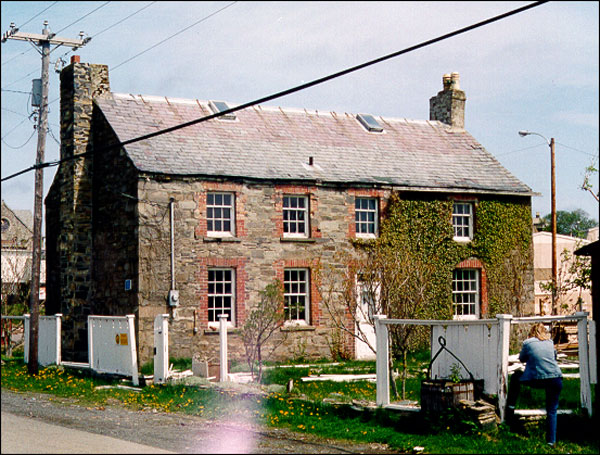Ridley Office
(Harbour Grace)
Built around 1838 by Thomas Ridley, the Ridley Offices were the business premises of one of Harbour Grace's best-known, and most notorious, merchants.

From 1820 to 1870 Thomas Ridley was one of the most important fishing/sealing merchants in Newfoundland. Known for his stubbornness, he was the only ship owner to refuse concessions to a group of striking sealers in 1832 and enraged sealers tore down the mast of one of his sailing vessels. During an attempt to become elected to the House of Assembly in 1836, Ridley encountered similar difficulties and was forced to withdraw because of violence and intimidation. In 1840 he was nearly killed during his second attempt to obtain a seat. Eventually he managed to get elected, and he served on the Executive Council from 1843 until 1848.
Because of his wealth and power, Ridley and his family were involved with several "firsts" in Harbour Grace. In 1854 he was the first to use gas lighting and in 1866 he was the first to use a steamship in the annual seal hunt. Thomas Ridley's son, William, was one of the founders of the Harbour Grace Water Company, the Harbour Grace Railway and the local grammar school.
With the failure of the Newfoundland fishery in the 1860s, Ridley and Sons experienced severe financial difficulties. In 1873, the company went bankrupt and the offices were sold. Over the years they have been owned by a number of different people, including such well-known local families as the Harveys and the Munns and, Most recently, former senator Eric Cook.
After the Ridleys, the most famous resident may have been Captain F. W. Golder. Working for John Munn, Golder found several inventive uses for codfish. His boneless codfish called "King Cod" won a prestigious award at the 1893 Chicago World Fair. He developed fertilizer from the bones and liquid glue from the skins. The glue was marketed under the slogan "It will mend anything but a broken heart."
The offices that have seen so much history are among the last of their kind in Harbour Grace. Of all the businesses built along the beach during the 1700s and early 1800s, it is the last one standing. It also survived the disastrous fire of 1844 that wiped out most of the community.
The Ridley Offices are made of stone with brick trim and a slate roof. The walls are two ft. thick and consist of inner and outer stone with a rubble fill. The stone is said to have come from either Kelly's Island or as ballast on ships from England. The offices have been altered over the years to suit various owners; the chimney, for example, was not part of the original. The building also has inset windows.
The Ridley Offices were recognised as a Registered Heritage Structure in April 1990.
Also view the Ridley Office Registered Heritage Structure on the Heritage Foundation of Newfoundland and Labrador web site. The Newfoundland and Labrador Heritage Web Site has on its site only a portion of the registered heritage structures in Newfoundland and Labrador. To view a complete list or search for a particular structure visit the Heritage Foundation's Property Search page.




